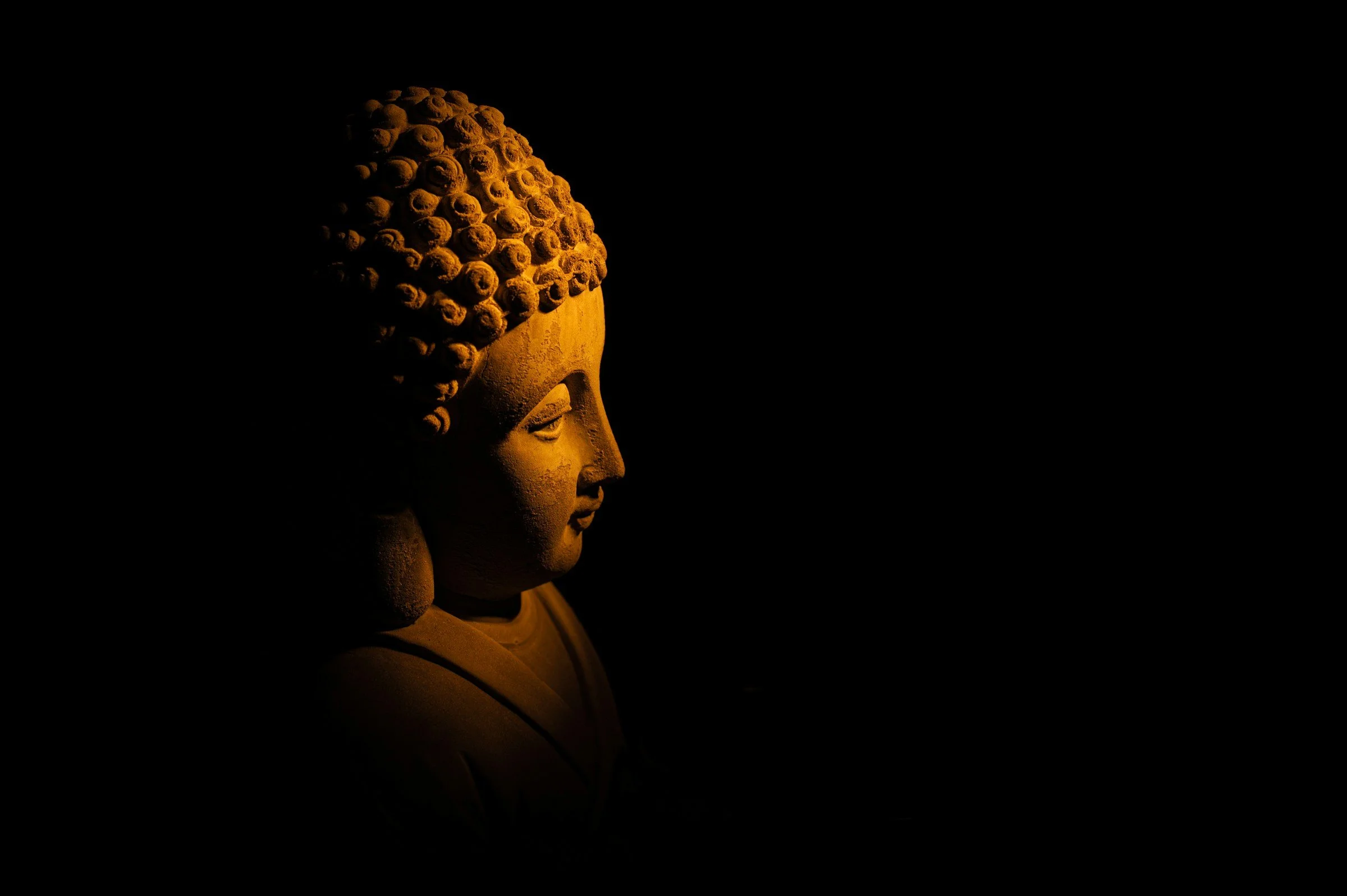Understanding Yoga Nidra
What is Yoga Nidra and how does it work?
Yoga Nidra, often referred to as "yogic sleep," is a state of consciousness between waking and sleeping, marked by profound relaxation and deep awareness. This ancient practice, rooted in the traditions of yoga, provides a bridge between the physical, mental, and spiritual aspects of the self. In this exploration, we will delve into how Yoga Nidra works, its benefits, techniques, and the science behind this transformative practice.
Understanding Yoga Nidra
At its core, Yoga Nidra is a guided meditation that leads practitioners into a state of deep relaxation while maintaining awareness. Unlike traditional sleep, where the mind enters a state of unconsciousness, Yoga Nidra encourages a state of conscious awareness. This practice is often conducted in a comfortable lying position, allowing the body to relax while the mind remains alert.
The Mechanism of Yoga Nidra:
You can begin your practice by setting an intention (Sankalpa).
What is a Sankalpa? Sankalpa is the Sanskrit term that means intention or resolve. In Yoga Nidra, it serves as a powerful tool for setting a clear, positive intention for your practice and life. When you enter a state of deep relaxation during Yoga Nidra, your subconscious mind becomes more receptive. By focusing on your sankalpa, you can plant a seed of intention that influences your thoughts, behaviors, and overall mindset.
This intention helps guide you towards positive changes and reinforces your sankalpa, allowing you to make conscious choices in your waking life that align with your desires. Over time, practicing with sankalpa can create lasting shifts in your life by replacing unhelpful patterns and habits with more supportive ones. I have provided more detailed information about this practice. Please refer to the section on the website titled Sankalpa.
Setting a sankara is a personal choice; it's not mandatory for your practice. On some days, you might feel inclined to set a sankalpa, while on others, you may prefer not to. You can choose to use the same sankalpa each time you practice yoga nidra, or you can decide to set a different one each session or none at all. Ultimately, this is your practice.
You can begin your practice by setting an intention (Sankalpa).
What is a Sankalpa? Sankalpa is the Sanskrit term that means intention or resolve. In Yoga Nidra, it serves as a powerful tool for setting a clear, positive intention for your practice and life. When you enter a state of deep relaxation during Yoga Nidra, your subconscious mind becomes more receptive.
By focusing on your sankalpa, you can plant a seed of intention that influences your thoughts, behaviors, and overall mindset. This intention helps guide you towards positive changes and reinforces your sankalpa, allowing you to make conscious choices in your waking life that align with your desires. Over time, practicing with sankalpa can create lasting shifts in your life by replacing unhelpful patterns and habits with more supportive ones. I have provided more detailed information about this practice. Please refer to the chapter on Sankalpas.
Setting a sankara is a personal choice; it's not mandatory for your practice. On some days, you might feel inclined to set a sankalpa, while on others, you may prefer not to. You can choose to use the same sankalpa each time you practice yoga nidra, or you can decide to set a different one each session or none at all. Ultimately, this is your practice.
Body Awareness:
Body awareness is a fundamental aspect of yoga nidra, serving as a critical component that enhances the practice and fosters a deeper connection between the mind and body. This heightened awareness allows individuals to explore their physical sensations, emotions, and mental states, ultimately leading to a more profound experience of relaxation and self-discovery.
As practitioners lie in a comfortable position, they are guided to focus on different parts of the body, often referred to as a "body scan." This practice encourages a deep sense of presence, drawing attention away from external distractions and anchoring the mind in the physical experience. Such mindfulness fosters a sense of grounding, enabling individuals to cultivate a deeper connection to their physical selves.
As individuals become more aware of their bodily sensations, they can better navigate the various stages of relaxation and introspection that yoga nidra offers. This heightened awareness allows practitioners to identify when they are becoming distracted or when their minds are wandering, enabling them to gently guide themselves back to the present moment.
By cultivating a deep awareness of the body, practitioners can embark on a transformative journey of self-discovery, ultimately leading to a more harmonious relationship with themselves and their physical existence. Through the lens of body awareness, yoga nidra becomes not just a practice of relaxation, but a profound exploration of the interconnectedness of body, mind, and spirit
Breath Awareness:
Breath awareness is a pivotal aspect of yoga nidra that significantly enhances the overall experience and depth of the practice. By focusing on the breath, practitioners can cultivate a profound connection between the mind and body, facilitating relaxation and self-awareness. The intentional observation of breath serves multiple purposes, all of which contribute to the transformative potential of yoga nidra.
This practice encourages individuals to simply observe their inhalations and exhalations, fostering a sense of presence and mindfulness. By centering attention on the breath, practitioners can anchor themselves in the present moment, which is crucial for experiencing the full benefits of yoga nidra. This mindful observation creates a calming effect, as the breath serves as a bridge connecting the body and mind, providing a focal point that helps to quiet the mental chatter.
The breath serves as a metronome, marking the passage of time and providing a natural cadence for the practice. As practitioners become attuned to the rhythm of their breath, they may find that their bodies naturally begin to relax and release tension in alignment with their inhalations and exhalations.
Breath awareness can foster a sense of connection to oneself and the greater universe. In many spiritual traditions, breath is seen as a life force, a vital energy that connects all beings. By cultivating awareness of the breath, practitioners can tap into this sense of interconnectedness, fostering feelings of unity and belonging. This awareness can deepen the spiritual aspect of yoga nidra, allowing individuals to explore their inner selves while feeling connected to something larger than themselves.
Visualisation:
In many Yoga Nidra practices, guided visualisation is employed to evoke peaceful imagery or scenarios. This serves to enhance the relaxation response and allows practitioners to explore their subconscious mind. Traditional Yoga Nidra scripts may not include them for several reasons.Traditional Yoga Nidra draws from ancient yogic texts and practices that prioritise meditation, breath control, and self-awareness. These practices have been passed down through generations, maintaining a focus on direct experience rather than imaginative engagement. As a result, visualisations may not be a part of the original framework.
Different schools of thought within yoga offer various interpretations of Yoga Nidra. Some traditions may integrate visualisations as a tool for deeper exploration, while others adhere strictly to traditional methods. I have included many different styles/types of yoga nidra.This variability allows you to choose the approach that resonates with you.
Transition to Deep Relaxation:
As the session progresses, the teacher guides participants into deeper states of relaxation. This is often achieved through progressive relaxation techniques, where tension is systematically released from each body part, leading to a state of profound stillness.
Returning to Awareness:
The practice concludes with a gentle return to waking consciousness. Practitioners are guided to gradually become aware of their surroundings, integrating the experience of Yoga Nidra into their waking life. This practice activates the parasympathetic nervous system, which counteracts stress and promotes a sense of calm.
How Yoga Nidra helps with Mental Health and the Benefits:
In today's fast-paced world, the challenges of stress, anxiety, depression, and trauma have become increasingly prevalent. As people seek effective ways to cope with these issues, alternative therapies like Yoga Nidra are gaining recognition for their profound benefits.
One of the primary advantages of Yoga Nidra is its ability to facilitate a profound state of relaxation. During a session, practitioners are guided into deep stillness, allowing both the mind and body to release accumulated tension. This relaxation response counteracts the physiological effects of stress, lowering cortisol levels and promoting an overall sense of calm. By shifting from the sympathetic nervous system, which governs the fight-or-flight response, to the parasympathetic nervous system, responsible for rest and recovery, individuals can experience a remarkable reduction in stress levels.
Yoga Nidra also enhances self-awareness, encouraging practitioners to explore their thoughts, feelings, and sensations without judgment. This heightened self-awareness helps individuals identify the root causes of their emotional challenges. By recognising stressors or triggers, people can develop healthier coping mechanisms, leading to better emotional regulation and resilience.
For those dealing with post-traumatic stress disorder (PTSD), Yoga Nidra can be particularly transformative. The practice provides a safe space for individuals to process traumatic memories at their own pace. By cultivating a sense of security during the sessions, practitioners can revisit and integrate these memories without becoming overwhelmed. This gradual exposure can help reduce the emotional charge associated with past traumas, fostering healing and recovery.
Many individuals struggling with stress, anxiety, and PTSD also experience sleep disturbances. Yoga Nidra can significantly enhance sleep quality by promoting relaxation that facilitates an easier transition into sleep. Regular practice can help recalibrate the sleep cycle, leading to deeper, more restorative rest and alleviating insomnia symptoms.
Research indicates that consistent practice of Yoga Nidra can lead to substantial reductions in symptoms of anxiety and depression. The combination of deep relaxation, self-awareness, and positive intention-setting fosters a shift in negative thought patterns, ultimately leading to improved mood and emotional balance.
Through regular practice, individuals can develop increased resilience to stressors, cultivating a sense of inner strength and stability that enables them to respond to challenges with greater equanimity.
As more individuals embrace Yoga Nidra, its potential for lasting positive change in mental health becomes increasingly evident, empowering people to navigate their emotional landscapes with greater ease and confidence.
You’re Spiritual Connection:
Yoga Nidra is a transformative practice that significantly enhances spiritual connections by facilitating a deeper understanding of oneself and the universe.
One of the main ways Yoga Nidra fosters spiritual connections is through heightened self-awareness. As individuals engage in the practice, they become more attuned to their inner thoughts and feelings. This introspection can lead to a greater understanding of one’s spiritual beliefs and desires. For instance, a practitioner may realise during a session that they have been neglecting their spiritual growth. This awareness can ignite a renewed commitment to exploring their spirituality, whether through meditation, reading sacred texts/books like “The living Gita”, “The Yoga Sutras of Patanjali” or participating in community spiritual activities.
Additionally, Yoga Nidra promotes the practice of intention setting, which can be profoundly impactful for spiritual development. When practitioners set intentions related to their spiritual journey, they create a focused pathway for their growth. For example, someone may enter a Yoga Nidra session with the intention of deepening their connection to their higher self.
During the guided practice, they might visualise themselves engaging in activities that resonate with their spiritual aspirations, such as meditating in nature or helping others. This visualisation not only reinforces their intentions but also inspires them to take tangible steps toward achieving their spirituality.
Yoga Nidra plays a significant role in enhancing spiritual connections, by advocating for self-awareness and the realisation of one's true nature, yoga nidra guides individuals towards a profound spiritual connection, leading to spiritual growth, inner peace and deeper connections with the self and the divine.
The Science Behind Yoga Nidra
Recent scientific studies have begun to validate the benefits of Yoga Nidra through empirical research. Neuroimaging studies show that the brain undergoes significant changes during Yoga Nidra, particularly in areas related to relaxation, emotional regulation, and self-awareness.
Brain Waves:
EEG studies have revealed that during Yoga Nidra, the brain exhibits theta and alpha wave activity. These brain wave patterns are associated with deep relaxation, creativity, and heightened intuition. I have provided more detailed information about this practice. Please refer to the section on the website titled ‘Talking Brainwave’.
Hormonal Regulation:
Research indicates that Yoga Nidra can help regulate hormonal responses, particularly cortisol. Lower cortisol levels contribute to reduced stress and improved overall health.
Autonomic Nervous System:
Yoga Nidra promotes a shift from sympathetic (fight or flight) to parasympathetic (rest and digest) nervous system dominance. This shift is crucial for restoring balance and fostering relaxation.
Integrating Yoga Nidra into Daily Life
To reap the full benefits of Yoga Nidra, consider incorporating it into your daily routine. Aim for consistency by practicing Yoga Nidra several times a week; even a short session can provide significant benefits. While it's ideal to practice at the same time each day, flexibility is key—don’t worry if you can’t stick to a strict schedule. The best time to practice is right after waking up, and you can even do it while still in bed—just be careful not to get too comfortable and fall back asleep. Mid-afternoon is also an excellent opportunity, especially when you experience that afternoon energy dip. Ultimately, find a time that works best for you; any practice is better than none.















